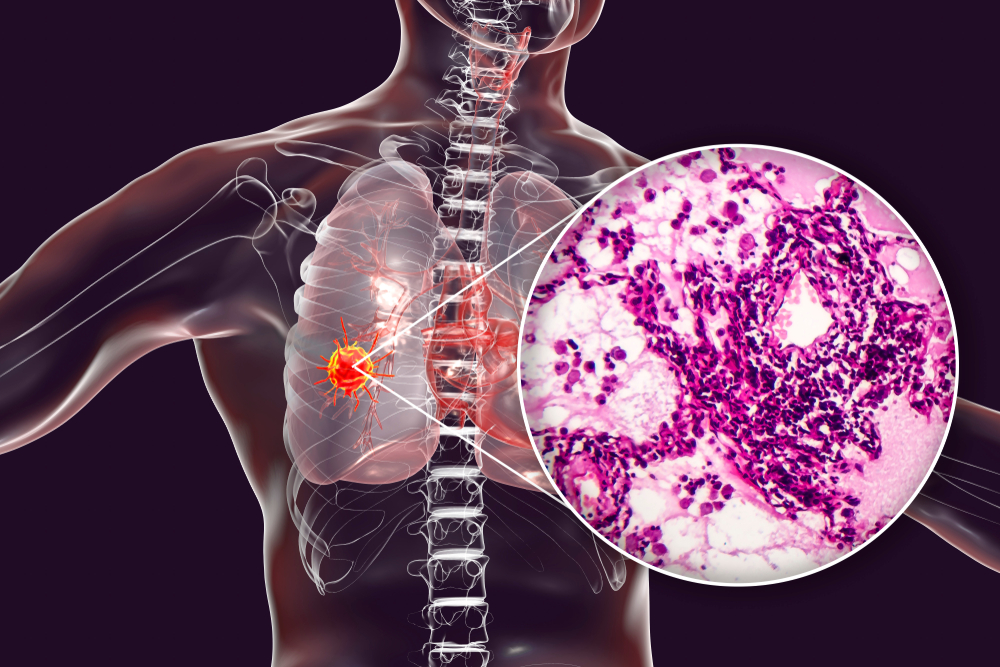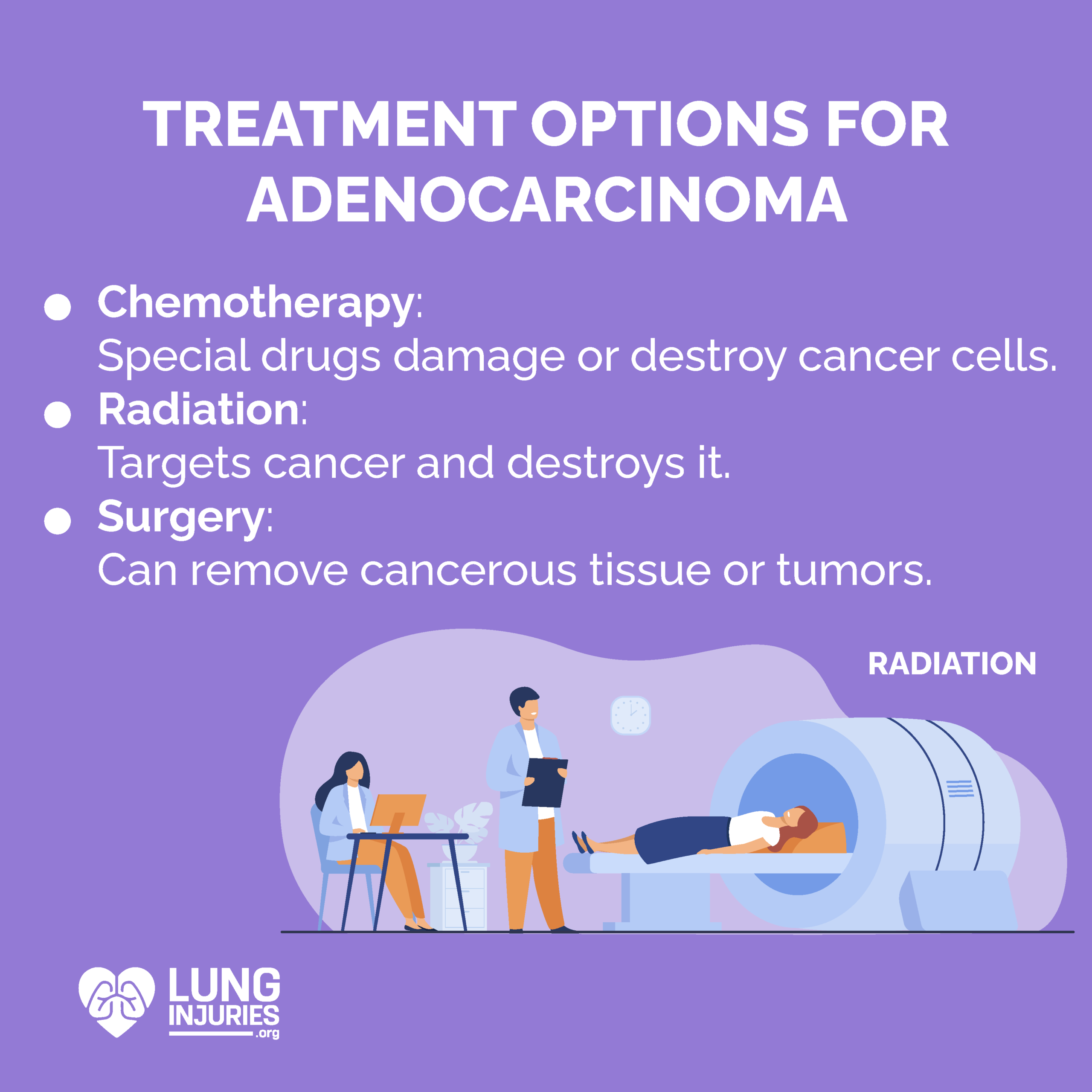Adenocarcinoma
The human body is composed of trillions of cells. Over your lifetime, these cells grow, divide, and then die. This is part of a normal cycle. When cells in different parts of the body grow out of control, cancer can develop. Adenocarcinoma is one type of cancer that develops when the cells in mucus-secreting glands in the body become out of control.
Cancer cells are less specialized than normal cells so they cannot stop multiplying. Cancer cells ignore programmed cell death or apoptosis which the body needs to get rid of unwanted cells.
What is Adenocarcinoma?
Adenocarcinoma is a type of cancer that begins in the mucus-secreting glands of the body. Glands are located in the lining of many organs and help the body stay moist and organs stay fully functional. Glandular cells make and release substances such as mucous, digestive juices or other substances.
Adenocarcinoma develops when the cells in these glands grow out of control. Cancer can then spread to nearby tissue and organs, or distant parts of the body.

Adenocarcinoma can develop in many different areas causing cancer in the:
- Lungs: Non-small cell lung cancers account for 85% of all lung cancers. They are divided into adenocarcinoma, squamous cell carcinoma, and large cell carcinoma. Adenocarcinoma accounts for around 40% of all lung cancers.
- Prostate: Adenocarcinoma accounts for 99% of all prostate cancers.
- Pancreas: Exocrine pancreatic tumors are adenocarcinomas that form in the ducts of the pancreas.
- Esophagus: Cancer developing in the glandular cells of the esophagus are adenocarcinomas.
- Colon: Adenocarcinomas developing in the intestinal glands inside the rectum or colon accounts for 95% of rectal and colon cancers.
Symptoms of Lung Adenocarcinoma
Depending on where the cancer is located and how severe it is, you may or may not have symptoms early on. Also, adenocarcinoma in the lungs can cause symptoms that are similar to other health conditions, some of which are minor in comparison. It is important to talk to your doctor about your symptoms, especially if you smoke, have a history of smoking or have other risk factors for lung cancers.
Some of the symptoms that people with adenocarcinoma of the lungs report include:
- Chest pain
- Cough
- Hemoptysis (coughing up blood)
- Difficulty breathing
- Wheezing
- Hoarseness
- Loss of appetite
- Dysphagia (difficulty swallowing)
- Unexplained weight loss
As you can see, many of these symptoms are also symptoms of other illnesses or diseases. Only your doctor can assess your symptoms and use diagnostic tools to determine the cause of your symptoms.
How is Adenocarcinoma Diagnosed?
Diagnosing adenocarcinoma begins with a thorough physical examination and a review of your medical history. From there, your doctor may order imaging and laboratory tests, such as:
X-Ray
A chest X-ray is the first test ordered if there is a suspicion of lung cancer. They can also be used to monitor response to therapy.
Biopsy
A biopsy is a procedure where the doctor removes a small piece of tissue from the body for examination in a lab. A biopsy is performed using a transthoracic needle guided by a CT scan or fluoroscopy. It is best for tumors found on the lung periphery.
The examination can tell whether there are cancerous cells, and if the cancer originated at the biopsy site.
Bronchoscopy
A small tube is inserted through the mouth or nose to look down into the lungs. A bronchoscopy can help your doctor see your lungs, assess masses and perform a biopsy if needed. It allows for the assessment of any airway obstruction. Biopsies can be done by bronchial washings or brushing as well as direct samples. It is best for central tumors.
Computed Tomography (CT)
A CT scan is similar to an X-ray, but it collects three-dimensional images of the tissues and structures in the body. CT scans can identify where the cancer is, and can be used to monitor how cancer responds to treatment. CT scan is most useful for staging of lung adenocarcinoma. It is used to differentiate between non-small cell and small cell lung cancer. It can assess any spread of cancer to surrounding tissues or organs such as the liver or adrenal glands.
Magnetic Resonance Imaging (MRI)
An MRI is an imaging technique that uses radiofrequency waves to create detailed images of the body. An MRI can create cross-sectional images that show various body parts from different angles. MRI scan is most useful if there is a suspicion of spread to the brain or spinal cord.
Blood Tests
Blood tests are not always effective at detecting cancer, but they can help your doctor assess your overall health by measuring certain chemicals, substances and nutrients in your body. Blood tests are useful in ruling out any infection and helping your doctor determine if you are safe to undergo chemotherapy.
Cytology
Your doctor may collect phlegm or fluid from around your lung for examination under a microscope to see if cancerous cells are present. Sputum cytology is most helpful for central tumors. It has a low false-positive rate of 1%. However, it has a false-negative rate of 40%. Therefore, it is not that useful in some cases.
Mediastinoscopy
A doctor inserts a scope through the skin to biopsy your lymph nodes between your lungs. This can tell the doctor if the cancer has spread to those lymph nodes.
Molecular Testing
Molecular Testing is another important part of your doctor’s evaluation of your cancer if it has spread or is metastatic. Your doctor will look to see if you have EGFR or ALK genetic mutations. If you are found to have these genetic mutations, then you are a candidate for less toxic, more targeted treatments.
You may not need all of these tests in order to get a diagnosis. The type of tests your doctor orders will depend on a variety of factors related to you and your health.
Treatment Options for Adenocarcinoma
Adenocarcinoma is often treated similarly to other types of lung cancer. However, the exact treatments you need will depend on the location of the cancer, how large a tumor is, if the cancer has spread and whether there are lymph nodes involved. Treatment options for cancer that is very localized will be different than treatment options for cancer that has spread (metastasized).
There are three primary modes of treating adenocarcinoma.

Surgery is the treatment of choice for cancers for stages I, II, or IIIa. Stages IIIb and IV usually require chemotherapy and surgery. Radiation therapy is usually reserved for patients who are not good candidates for surgery. Molecular-targeted therapy is becoming increasingly important for patients with advanced disease.
In some cases, one or more of these treatment methods may be used together for optimal results. It is fairly common for a cancer treatment plan to include multiple treatment strategies.
Remember that cancer treatment may have some side effects. Talk to your doctor about your treatment options and ask specific questions about side effects.
Prognosis for Adenocarcinoma
The prognosis for lung cancers that are advanced at the time of diagnosis are generally poor. However, there are many factors that can influence your prognosis, such as your overall health, where the cancer is located, and how much it has spread. Your body’s response to treatment will also impact your overall prognosis.
Research suggests that the 5-year survival rate of lung cancers, including adenocarcinoma, is 70-85% for stage 1 cancers. That drops to 30% for locally advanced cancers, and 5% for cancer that has metastasized (spread) to distant parts of the body.
To improve your prognosis, talk to your doctor about things you can do. Don’t smoke or be around secondhand smoke. Smoking is a leading cause of lung cancers. Long-term monitoring for lung adenocarcinoma survivors includes doctor visits and CT scans. Other recommendations include annual influenza vaccinations, pneumococcal vaccination, and herpes zoster vaccination. Remaining active is a good prognostic sign.
Sources:
- https://www.cancer.ca/en/cancer-information/cancer-type/cancer-of-unknown-primary/treatment/adenocarcinoma-of-unknown-primary/?region=on
- https://www.lungcancercanada.ca/Lung-Cancer.aspx
- https://www.cancercenter.com/adenocarcinoma
- https://www.healthline.com/health/cancer/adenocarcinoma-symptoms#symptoms
- https://www.ncbi.nlm.nih.gov/books/NBK519578/

